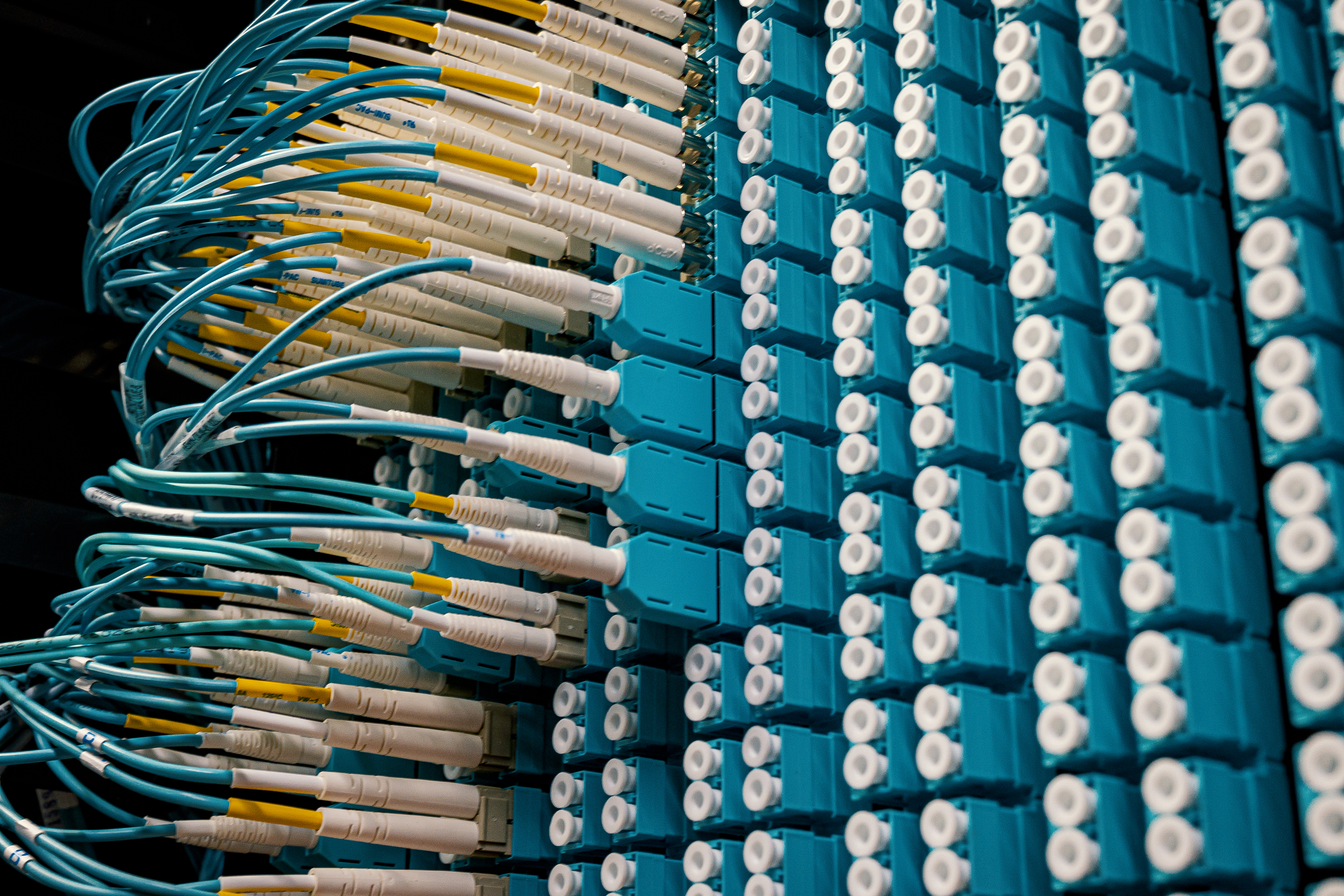
Fiber optic technology has continued to evolve and has brought a whole new outlook for our fast-paced work environments. Below are some of the places where fiber optics have changed the way the world works.
FIBER OPTICS ROLE IN OFFICE NETWORKS
Office networks have found fiber optics work very well as a backbone infrastructure. With fiber optic applications, office networks have high-capacity communication lines, which give them faster internet connections, and help high-tech equipment function quicker. It has helped to improve video conferencing experiences.
With a fiber optic application, office networks have the advantage of sending and receiving files more swiftly and in greater amounts than information had been transmitted than in the past. Fiber optic cables are the best types for computer networks because they send information digitally, which keeps networks more secure. Large office networks additionally benefit from fiber optic applications because they can fit into tight spots and bend easily around corners. This is due to the amazing flexibility of fiber optics. The security that fiber optic applications offer is a major benefit to firms such as banks, which are often owned by private networks.
FIBER OPTICS IN 5G NETWORKS
Wireless communications using 5G technology provide a high-speed experience, with fiber optics a part of that. This lowers latency or lagging in communications for a smoother experience, whether it is phone calls, playing video games, streaming TV, or downloading webpages on a cell phone. It helps to improve backhaul connectivity, which is the transmission between the network and 5G cell sites. Fiber optics improves fronthaul connectivity too, which is part of the communications network between the baseband unit and remote radio heads.
FIBER OPTICS IN DATA CENTERS
A couple of the other roles of fiber optic technology include connecting data centers and supporting cloud storage. Fiber optic cables create faster data transfer speeds, as well as the ability to handle higher amounts of data, versus copper cables. This type of cabling enables users to access cloud-stored data more readily too. It increases bandwidth capacity, without the loss of signal quality. These cables are more energy efficient and use less power. Copper cables use electromagnetic signals to communicate, which makes them more susceptible to hacking attempts, while fiber optic cables keep server facilities more secure. This technology also future proofs data center expansions.
FIBER OPTICS IN THE MEDICAL FIELD
For many years, specialized fiber optic instruments have been used in the medical field because of their flexibility and capability to be sanitized like traditional ones are. The lab and clinical diagnostics, endoscope, light therapy, x-ray imaging, dental hand pieces, surgical, and diagnostic instruments are among the many ways it is used in the medical field.
Fiber optic applications help the medical field remain on a path of advancement, especially in the field of medical robotics. They allow a physician to see inside specific areas of the body and perform surgery on hard-to-reach areas. Fiber optic applications provide a quicker and more accurate analysis of blood work. They are further used for the removal of abnormal skin and cancerous growths.
Patients benefit from medical fiber optic applications because they offer faster healing and less discomfort after surgical procedures, because of smaller incisions.
FIBER OPTICS IN INDUSTRY
The industrial world, specifically smart manufacturing and automation are in motion because of fiber optic technology. The rate that data travels, combined with low latency, makes control systems, machines, robots, and other equipment function with precision and speed. These systems additionally operate with a lower energy consumption because of fiber optics.
FIBER OPTIC APPLICATIONS IN OTHER WORK ENVIRONMENTS
Fiber optics are also helpful in many other fields today such as automotive, plumbing, electrical, engineering, carpentry, and exterminating. The automobile mechanic can check valves and pistons without removing the heads. The plumber can locate the cause of a blocked drain and pinpoint a leak easily. The engineer can see hard-to-reach places during safety inspections. All of this is due to fiber optic applications.
FIBER OPTICS AND GREEN ENERGY
Fiber optics help to make green technology function more reliably and with less of an impact on the planet. We already covered its energy-efficiency benefits, but fiber optics operate in specific aspects of green energy. The technology is utilized in sensors that monitor temperature, vibration, and strain in solar and wind farms, for example. It is a part of smart grid management, with fiber optics controlling data transfers between smart meters, substations, and control centers.
Agriculture is a sector that harnesses green energy with fiber optics. Fiber optic sensors monitor conditions in the soil to help with resource and water management.
It is helpful in environmental research to collect data, with sensors assessing changes in pressure, humidity, temperature, and the environment overall.
For businesses in need of a more pleasant work environment for their employees and customers, there is a fiber optic application available that brings sunlight in without using electricity. This type of green building technology often results in great energy savings for the business.
The transportation category is impacted by fiber optics. The technology links traffic management, lights, and vehicle-to-infrastructure connections, to determine environmental impacts.
FIBER OPTICS AND THE INTERNET OF THINGS (IOT)
The Internet of Things (IoT) is a term that describes the connection between electronic items and their connections to the internet, whether it is a household appliance, machinery, or infrastructure. Optical fiber helps these independent items are using servers to additionally operate with quick speeds, low latency, high security, reliable and long-distance connectivity, and energy efficiency.
Shop for items from CableOrganizer® to help maintain a fiber optic network, including cables, connectors, patch panels, enclosures, testers, cable routing systems, and other optical fiber products.


